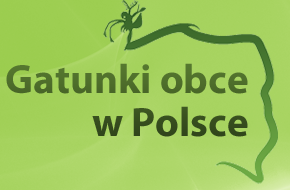Ostrinia nubilalis Hübner 1796 – Omacnica prosowianka – European corn borer
Information in Alien Species in Poland database are purely scientific and not legally binding.
Status
The species is alien in whole area of its current or past occurrence in Poland
Currently present in the environment
Reproducing in the environment
Numbers or/and range increasing
Invasive alien species
General charactreristics
Description and biology
Males differ from females. Herbivorous
Occurrence
Map of occurrence
Areas on the map correspond to pemanent occurrence of the species. Points on the map indicate introduction places and/or single records of the species; they do not always correspond to current presence of the species in a given locality.
Information that could update the map of occurence of the species can be sent to ias@iop.krakow.pl
References
- Bereś P., Korbas M., Walczak F., Węgorek P., Złotowski J. (red. Walczak F.) 2007. Poradnik sygnalizatora ochrony zbóż : 111 ss.. Instytut Ochrony Roślin link
- Bereś P.K. 2008. Omacnica prosowianka zagrożeniem dla kukurydzy 7/8: 16-19. Ochrona Roślin link
- Capinera J.L. 2000. European Corn Borer – Ostrinia nubilalis Hubner EENY–156.: . Uniwesity of Florida, Institute of Food and Agricultural Sciences link
- Dicke F.F. 1932. Studies of host plants of the European corn borer, Pyrausta nubilalis Hübner, in southeastern Michigan. J. Econ. Entomol. 25: 368–378. link
- Dubas A. (red.) 2004. Technologia produkcji kukurydzy : 133 ss.. Wyd. Wieś Jutra, Warszawa link
- Jastrzębski A. 1999. Występowanie omacnicy prosowianki na chmielu Progress in Plant Protection 39(2): 436–438.
- Kania C.Z. 1961. Z badań nad omacnicą prosowianką–Pyrausta nubilalis (Hbn.) na kukurydzy w okolicach Wrocławia w latach 1956–1959 Pol. Pismo Entomol., Seria B 3–4(23–24): 165–181. Pol. Pismo Entomol.
- Mapa Bioróżnorodności [online] 2015. Krajowa Sieć Informacji o Bioróżnorodności link
- Mrówczyński M., Boroń M., Wachowiak H., Zielińska W. 2004. Atlas szkodników kukurydzy : 78 ss.. Instytut Ochrony Roślin, Syngenta link
Life form: Insect
Phylum: Arthropoda
Class: Insecta
Order: Lepidoptera
Family: Crambidae

